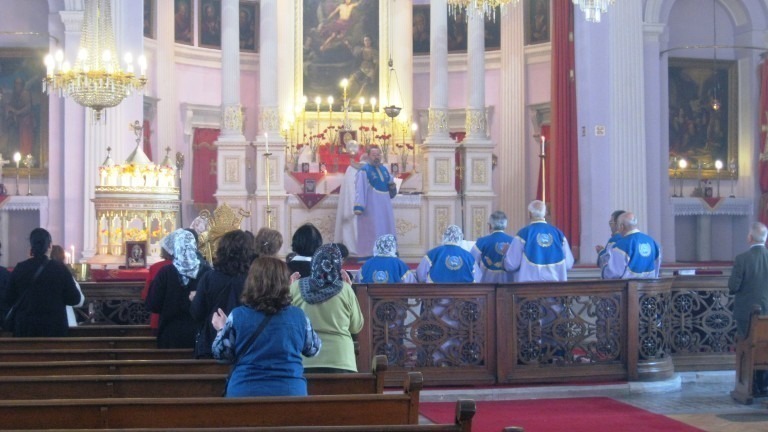Fenerbahce Park – lazy Sundays
Istanbul in summer can be very hot. We couldn’t always go away on holidays so spent our Sundays in Fenerbahce Park. Here’s how we’d typically spend the day.
“… To reach the water we have to walk past tables occupied by Turkish families. Most of them turn and stare at our mixed groups of foreigners and Turks, the men in our group clad only in swimming trunks and rubber shoes, and the women wrapped in towels to cover swimming costumes considered daringly revealing by local standards. As well as those who only occasionally visit the park there are the regulars like the multi generational family from Fikirtepe, a poor neighbourhood situated on a slope between two busy major arterial roads.
I know without asking that the fathers work six days a week and even if they get time off they can’t afford to go anywhere. Sundays spent in Fenerbahce Park is their summer holiday. We know the kids best, in particular timid little Emin who is half blind without his glasses. He has a slightly older and bigger cousin who likes to urge him into deeper water where he plays tricks on him to test his courage. They are nice, well brought up kids who respectfully call me abla (big sister) and are clearly excited at the chance to speak to a foreigner.
Over the weeks their mothers begin to shyly exchange pleasantries with us. Their fathers never speak to me or any of the other women who join our group, but they also never look closely at my swimming costume, skimpy in comparison to their women who, when they bathe, do so fully clothed. Even though a Muslim style of bathing costume called haşema, designed to conceal the body, is now more readily available in Turkey, I doubt whether the family could afford them. The boys swim in shorts and when the girls do venture in, they are shrouded in oversized T-shirts.

The area at the bottom of the broad terraced concrete steps leading to the water is ruled by a group of old men, whom I suspect have been swimming here since childhood. Their sun-browned skin is wizened from long exposure to the elements. They arrive early in the morning and erect a ramshackle hut made of plastic sheeting attached to the sandstone retaining wall. A swathe of fabric is thrown on top to cast some shade. Under this small patch of shadow they play backgammon and chat. Nails roughly knocked into crevasses when the wall was first built are used to hang towels for drying themselves and plastic bags for rubbish.
One of them always lies face up on the warm terrace, eyes closed. Unlike the other men in their long baggy shorts he wears very brief and very loose Speedos and lies with his legs spread wide. When I approach him from certain angles I avert my eyes as I pass, in order not face the mortification of what I might see. As I draw closer to the water all the other men look up from what they are doing, smile at me and nod in acknowledgment. They own the park, but generously allow others to share it with them. I return their greetings and look for a place to put my own towel.
Some of the same submerged rocks whose presence made Süleyman the Magnificent demand a light house be erected on the point have been moved to create a shallow pool at the water’s edge. Here small children paddle and splash each other with delight. The stack of rocks that forms a wall to keep them safe provides the perfect jumping off spot for those game enough to do so.
This is where Emin’s cousin taunts him to acts of bravery beyond his courage, and where the men and boys from the outer suburbs or the varoş, so named for the places they live, dive into the depths beyond. They are manual workers with low levels of education who strip off their jeans and swim in knee length underpants. When the word varoş is used to describe them it’s not about geography but a veiled and insulting reference to their social class. They stare hungrily at any women younger than their mother wearing a Western style swimming costume, but clumsily hit each other in embarrassment if you ever catch them looking.

We quickly head past the breakwater and swim out to the open sea. Usually we have a tennis ball so we spread out and play catch until we’re tired. Then we tread water and gossip, aimlessly drifting with the current until we realise we’re almost in the path of the ferries heading for the Princess Islands. This is the signal to head back towards the shore.
Just outside the shallow pond we often stand on the submerged rocks waiting for a lull in the rise and swell of water. From here we can see to the point where the old men stand on their own submerged rock. It sits very high in the water so at low tide the water laps at their ankles.
In the shadows of dusk their silhouettes bring to mind the biblical image of Jesus walking across the Sea of Galillee. Unlike the disciples we’re not waiting to be saved. Passing sea craft churn the water and spread strong waves which make it unsafe to try to swim through the gap. At the first opportunity I launch myself torpedo like over the seaweed covered, barnacle encrusted rocks and into the groups of small children and non-swimmers who play in the shallows…
If you want to know about the rest of my Sundays spent in Fenerbahce Park you can read the full story in Exploring Turkish Landscapes: Crossing Inner Boundaries.





